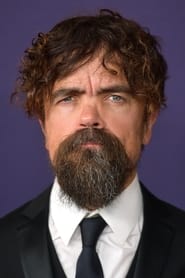
Ask Your Own Question
What is the plot?
In "Anatomy of A Scene: The Battle of Winterfell," the episode begins with a behind-the-scenes look at the preparation for one of the most significant battles in "Game of Thrones." The scene opens with the crew discussing the scale of the Battle of Winterfell, emphasizing the logistical challenges of filming such a massive sequence. The director and producers explain their vision for the battle, highlighting the importance of creating a sense of chaos and urgency.
The episode transitions to the actual battle sequence, starting with the initial moments of the Night King's army approaching Winterfell. The tension builds as the defenders of Winterfell, including Jon Snow, Daenerys Targaryen, and Sansa Stark, prepare for the impending assault. The camera captures the grim determination on their faces, showcasing their internal fears and hopes as they brace for the fight of their lives.
As the battle begins, the first wave of White Walkers and wights crashes against the walls of Winterfell. The defenders unleash a barrage of arrows, and the scene is filled with the sounds of clashing steel and the cries of the wounded. The cinematography highlights the chaos, with quick cuts between various characters as they fight valiantly to protect their home. Jon Snow and Daenerys Targaryen are shown coordinating their efforts, demonstrating their leadership and resolve.
The episode delves into key moments of the battle, such as the moment when the Dothraki charge into the darkness, their flaming weapons illuminating the night. The scene captures the bravery and ferocity of the Dothraki warriors, but it quickly turns to despair as they are overwhelmed by the sheer numbers of the undead. The camera lingers on the faces of the surviving defenders, showcasing their shock and fear as they realize the scale of the enemy they are facing.
As the battle rages on, the focus shifts to Arya Stark, who is seen navigating through the chaos. The episode highlights her agility and determination as she fights her way through the wights, showcasing her growth as a warrior. The emotional stakes are raised as she encounters familiar faces, including her siblings, reinforcing her motivation to survive and protect her family.
The tension escalates when the Night King finally arrives at Winterfell, leading to a climactic confrontation. The episode captures the moment when Jon Snow and Daenerys Targaryen realize the true threat he poses. The cinematography emphasizes the dread and urgency as they attempt to rally their forces against him. The stakes are raised as they strategize on how to confront the Night King, showcasing their desperation and determination.
In a pivotal moment, Bran Stark, who is positioned as bait to lure the Night King, is shown in a vulnerable state. The episode explores the emotional weight of this decision, as his siblings grapple with the implications of using him as a target. The tension builds as the Night King approaches, and the defenders prepare for a final stand.
The climax of the battle occurs when Arya Stark makes her fateful move. The episode captures the suspense as she stealthily approaches the Night King, her internal resolve evident in her expression. In a breathtaking moment, she leaps and delivers the killing blow, shattering the Night King and causing a chain reaction that leads to the destruction of his army. The scene is filled with a mix of triumph and disbelief, showcasing the emotional release for the characters and the audience alike.
As the battle concludes, the aftermath is explored, with the surviving characters grappling with their losses and the cost of victory. The episode captures the somber mood as they mourn their fallen comrades and reflect on the sacrifices made. The final moments emphasize the resilience of the living, setting the stage for the next chapter in their fight against the remaining threats in Westeros.
What is the ending?
In the episode "Anatomy of A Scene: The Battle of Winterfell," the ending showcases the aftermath of the intense battle against the Night King and his army of the dead. Arya Stark delivers the fatal blow to the Night King, shattering him and causing the death of all White Walkers and wights under his command. The living, led by Jon Snow and Daenerys Targaryen, emerge victorious, but the cost is high. Many beloved characters, including Theon Greyjoy and Jorah Mormont, lose their lives in the fight. The episode concludes with the survivors mourning their losses and preparing for the next phase of their struggle for survival against the looming threat of Cersei Lannister.
As the scene unfolds, the tension is palpable. The Battle of Winterfell begins with the living preparing for the onslaught of the dead. The camera pans over the battlements of Winterfell, where soldiers are stationed, their faces a mix of fear and determination. The air is thick with the anticipation of battle, and the sound of the wind howling through the trees adds to the ominous atmosphere.
The first wave of the dead crashes against the walls, and chaos erupts. The living fight valiantly, but the sheer number of wights is overwhelming. Jon Snow, wielding Longclaw, fights alongside his allies, his face set in grim determination. He is driven by the need to protect his family and the North, his internal struggle evident as he faces the horrors of the undead.
Meanwhile, Daenerys Targaryen takes to the skies on Drogon, raining fire down upon the advancing army. Her fierce resolve is clear; she is fighting not just for her claim to the Iron Throne but for the survival of humanity. The flames illuminate her face, revealing a mix of fear and fierce determination.
As the battle rages on, we see key characters facing their own personal demons. Theon Greyjoy, having redeemed himself, fights bravely to protect Bran Stark, who is waiting in the godswood. Theon's internal conflict is palpable; he seeks to atone for his past mistakes, and his bravery shines through as he faces the Night King's forces.
In a pivotal moment, Arya Stark, who has trained for years to become a skilled assassin, finds herself in a desperate situation. She navigates through the chaos, her heart racing as she witnesses the horrors around her. Her motivation is clear: she fights for her family and for those she loves. As she approaches the Night King, the tension builds. In a breathtaking moment, she leaps, and with a swift motion, she plunges a Valyrian steel dagger into the Night King's chest. The impact is immediate; he shatters into ice, and with him, the entire army of the dead collapses.
The aftermath of the battle is somber. The camera captures the faces of the survivors, their expressions a mix of relief and grief. Jon Snow stands amidst the wreckage, his heart heavy with the loss of friends and allies. Daenerys, still on Drogon, surveys the battlefield, her victory overshadowed by the cost of the lives lost.
The fate of the main characters is starkly illustrated in these final moments. Theon dies a hero, having fulfilled his promise to protect Bran. Jorah Mormont, fighting valiantly for Daenerys, succumbs to his injuries, leaving her to mourn the loss of her loyal protector. Arya, having achieved her goal, is left to grapple with the weight of her actions and the lives lost around her.
As the episode concludes, the survivors gather, their faces marked by the battle's toll. They are united in their victory but haunted by the memories of those who fell. The camera pulls back, revealing the devastation of Winterfell, a stark reminder of the cost of war and the fragility of life in the face of overwhelming darkness. The stage is set for the next chapter in their fight for survival, as the threat of Cersei Lannister looms on the horizon.
Is there a post-credit scene?
In the episode "Anatomy of A Scene: The Battle of Winterfell" from the Game of Thrones specials, there is no post-credit scene. The episode focuses on the behind-the-scenes aspects of the Battle of Winterfell, exploring the intricate planning, choreography, and emotional weight of the battle. It features interviews with the cast and crew, discussing their experiences and the challenges they faced while bringing this monumental scene to life. The emphasis is on the technical achievements and the storytelling elements that contribute to the battle's impact, rather than any additional narrative content or post-credit sequences.
What strategies did Jon Snow employ during the Battle of Winterfell?
Jon Snow, as the commander of the defense at Winterfell, focused on rallying his troops and utilizing the terrain to their advantage. He positioned the forces strategically along the walls and prepared for a defensive stand against the Night King's army. His emotional state was one of determination and urgency, as he understood the stakes of the battle were not just for Winterfell, but for the survival of humanity.
How did Theon Greyjoy's character arc culminate during the Battle of Winterfell?
Theon Greyjoy's character arc reached a poignant climax during the Battle of Winterfell when he chose to defend Bran Stark, whom he had betrayed in the past. His internal struggle was evident as he sought redemption for his previous actions. Theon fought valiantly, embodying bravery and sacrifice, ultimately facing the Night King in a moment that underscored his growth and desire to protect those he once wronged.
What role did Arya Stark play in the outcome of the battle?
Arya Stark played a crucial role in the outcome of the Battle of Winterfell by ultimately defeating the Night King. Her journey throughout the series had prepared her for this moment, showcasing her skills as an assassin. The tension built as she stealthily navigated through the chaos of the battle, culminating in a dramatic confrontation where she used her training to deliver the fatal blow, highlighting her transformation and resilience.
What were the emotional stakes for Sansa Stark during the battle?
Sansa Stark experienced intense emotional stakes during the Battle of Winterfell as she grappled with the weight of leadership and the safety of her family. As the battle raged on, her fear for her sister Arya and brother Jon was palpable. Sansa's determination to protect Winterfell and her people was evident, showcasing her growth from a naive girl to a strong leader, as she coordinated the defense and rallied the remaining forces.
How did the visual effects enhance the portrayal of the undead army during the battle?
The visual effects in the Battle of Winterfell were pivotal in portraying the overwhelming threat of the undead army. The chilling imagery of the wights and White Walkers, combined with the dark, foreboding atmosphere, created a sense of dread. The use of practical effects, alongside CGI, brought the horror of the Night King's forces to life, emphasizing the scale of the battle and the desperation of the living as they fought against an unstoppable tide.
Is this family friendly?
"Anatomy of A Scene: The Battle of Winterfell" from Game of Thrones contains several elements that may be objectionable or upsetting for children or sensitive viewers.
-
Violence and Gore: The episode features intense battle scenes with graphic depictions of violence, including sword fighting, bloodshed, and injuries. The brutality of war is portrayed in a raw and unfiltered manner.
-
Death and Loss: Characters face significant peril, and there are moments of death that can be emotionally distressing. The impact of loss on characters is a central theme, which may be heavy for younger audiences.
-
Fear and Tension: The atmosphere is filled with suspense and dread, as characters confront overwhelming odds. This can create a sense of fear that might be unsettling for some viewers.
-
Dark Themes: The episode explores themes of survival, sacrifice, and the harsh realities of conflict, which may be too mature for younger viewers.
-
Emotional Turmoil: Characters experience deep emotional struggles, including fear, despair, and hopelessness, which may resonate strongly and be upsetting for sensitive individuals.
These elements contribute to a tone that is more suited for mature audiences, making it less family-friendly.
























